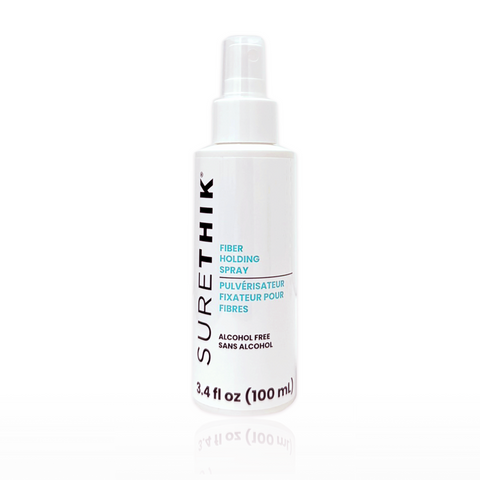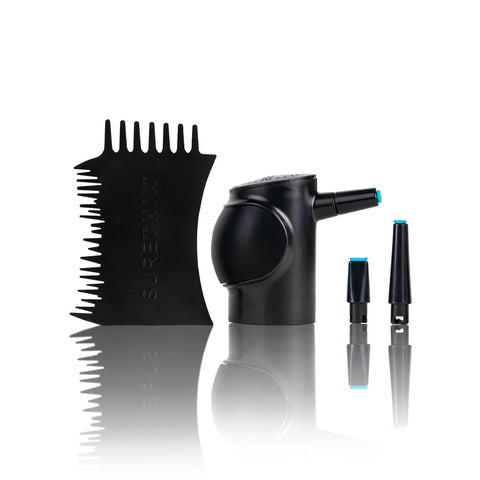
How To Repair Damaged Fine Hair
You can detect if your hair is damaged by looking at it and feeling it. Breakage and split ends may be visible, as well as dry, brittle hair, a dull and lifeless style, and likely some more frizz. Accepting that you have a problem is the first step toward repairing your damaged hair. It's possible that your hair is moderately damaged if some of the ends are splitting or drying takes an eternity.
Don't be alarmed. It is possible to help with the healing of some of that hair damage as well as the prevention of future hair breakage.
Here's a Step-by-Step Guide on Repairing Damaged Hair:
1: Hair Mask:
A hair mask is basically a strong conditioner. It works in the same way as a conditioner, but with the added benefit of being more intensive and nutritious. Hair masks hydrate dry hair and help color-treated hair retain its vibrancy. And, as we mentioned in our frizz survival guide, the latter is not only associated with nicer hair, but it is also necessary to keep frizz at bay.
What are the benefits of hair mask?
Hair masks, as previously said, result in shiny and smooth locks. Masks can cover damage but not totally cure it (split ends can only be restored with a haircut), but they can thicken (by pumping in moisture) and strengthen your hair, as well as stop damage in its tracks, preventing further breakage. Deep conditioning is necessary throughout the year, but particularly in the winter. Hair masks hydrate dry hair and help color-treated hair retain its vibrancy. The biggest benefit is that they are like a mini-spa at home; they may feel like a completely relaxing treatment while also making your hair look amazing!
How often should I use a hair mask?
Hair masks can be applied weekly, monthly, or as needed. Hair masks come in a range of shapes and sizes; some are worn in the shower or bath, while others are worn overnight. However, don't sleep with a hair mask that wasn't designed to be worn while sleeping. You do not, however, need to apply an overnight mask to reap the benefits. For a genuinely nourishing treatment for your dry hair, try the OUAI hair mask.
How to use a hair mask?
Shampoo and rinse your hair beforehand. Repeat the rinsing and shampooing process. Shampooing your hair twice a week is recommended. Remove any debris first, then thoroughly cleanse, but don't use too much product. Make sure you rinse your hair thoroughly.
Condition as usual after that. You only need to leave your conditioner on for about two minutes. Rinse after that.
To begin functioning, apply your hair mask and leave it on for three to five minutes. You can leave your mask on for up to twenty minutes if you want to gain additional benefits or have extremely dry hair. Use the extra time to wash your face, exfoliate your body, shave your legs, apply a face mask, and so on.
Rinse your hair well to eliminate any extra product. Towel dry your hair (before using a hairdryer) and add a small amount of Abyssinian oil to the ends.
Voila! Your hair should now be looking fantastic!

2. Hair Oils and Natural Oils:
Try natural oils like coconut, argan, jojoba, almond, olive, and grapeseed if you want to avoid chemicals or just try out some new hair care products. These are some of the greatest oils for hair health that may be used directly to the skin and hair. Essential oils like lavender and lemongrass, for example, offer various characteristics that nourish and strengthen hair while also making it look and feel lovely.
Coconut Oil:
Coconut oil comes from coconuts, as you might imagine. It's one of the most versatile oils on the market, and it's also good for your skin. It has a high fatty acid content, which allows it to penetrate deeply into the hair without evaporating. Coconut oil is high in carbohydrates, vitamins, and minerals, which are all important for hair health. Coconut oil is one of the best oils for hair growth and comes in a range of forms, including refined, unprocessed, and extra-virgin.
Almond Oil:
The kernels of almonds are used to obtain almond oil. Almond oil is not only fantastic for cooking, but it also works wonders on your hair. Vitamin E, fatty acids, proteins, and antioxidants are all present, as is magnesium, which helps to prevent hair breakage and encourages hair development. Mineral deficiency can lead to slowed hair growth and hair loss, thus having almond oil in your diet can help with these issues. Because it contains no chemicals, all-natural almond oil is ideal for cooking and skin care.
Ideal: Hair that is dry and damaged, prone to dandruff, or suffering slow hair growth or hair loss
Benefits: Almond oil prevents hair loss and breakage by hydrating, sealing, and protecting hair. If you use it on a daily basis, it will help you grow longer and thicker hair.
How to utilize it: Almond oil is thick at room temperature. One teaspoon of oil should be warmed and massaged into your scalp. You can leave it on overnight and wash it off the next day. After shampooing, apply almond oil to your hair to replenish moisture and prevent breakage and split ends. Using your palms, rub a few drops through towel-dried hair.

BondiBoost - Rapid Repair Serum for Damaged Hair:
Rapid BondiBoost Repair A natural base functional active and botanical combination in the serum split-end therapy treatment mends and seals split ends, smooths the cuticle, and revitalizes brittle ends. Breakage-related hair loss is minimized, and hair appears healthier and smoother hair.
Ideal: Dry and damaged hair, frizz, and split ends
Benefits: Intensive treatment that visibly repairs split ends by sealing and smoothing the cuticle and reduces hair fall due to breakage.
How to utilize it: Apply one to two pumps to towel-dried or dry hair, focusing on the mid-lengths to ends.
Dae - Prickly Pear Hair Oil:
The delightful scent of a flowering prickly pear cactus pervades this multi-purpose miracle worker. On dry hair, use it as a smoothing agent, breakage therapy, or overnight hydration treatment. Then take it a step further by using its desert magic to nourish dry portions of your skin.
Ideal: All hair types, dry and damaged.
Benefits: Sweet Prickly Pear Seed Oil, pressed from the seeds of its namesake cactus, has a sweet, fruity aroma and conditions strands to make them silky, soft, and healthy.
How to utilize it: Begin with one pump and smooth it through your strands, then repeat as needed.
3. Protect Your Hair From UV Rays:
Both your skin and your hair require sun protection. Hair sunscreen is available, and it is critical to protect your strands. UV radiation can harm hair as well as skin. If you're going to be outside in the sun, wear a hat or apply sunscreen to your hair. For the best protection against rays and temperature, invest in heat and UV protectant hair products. Here are some fantastic ideas to consider!
SunBum- Scalp & Hair Mist SPF 30:
Scalp & Mist Sunscreen Spray with SPF 30 is a light, nourishing mist that protects your scalp from the sun without weighing down your hair. It's appropriate for all hair types.
How To Use: Hold the container 4 to 6 inches away from the scalp to apply. Spray liberally onto your part or other exposed sections of your scalp 15 minutes before sun exposure and spread evenly with your hands. Spraying directly on the face is not recommended. Reapply after 80 minutes of swimming or sweating. After towel drying, immediately. At the absolute least, every two hours.
R+CO - Sun Catcher:
Softens, seals, detangles, and fights frizz in your hair with this nutritious and protecting leave-in conditioner. Use style products on damp or dry hair, alone or layered beneath them, to get the best results. Vitamin C, Hyaluronic Acid, Radish Root Extract, and Coconut Oil are all present in this mist.
How To Use: Work through towel-dried hair and style as usual. Reapply as needed for an extra boost of moisture.






